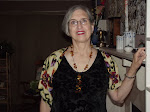The immigrants who settled
Exposure to names like these from an early age, besides bestowing on me a facility with hard to pronounce or spell surnames, also forever marked me as an outsider in places like
Back to my classroom. I will allow that one or two Anglo-Saxon names cropped up – Houlihan and Higgins come to mind – but overall, the Irish just hadn’t made much of a mark on day-to-day life in
St. Patrick’s Day had nothing to do with green beer, Irish stew, leprechauns, or parades. Instead, we celebrated it from the vantage point of our teachers, the nuns, who proudly told us that
If you have seen the play “Doubt,” the movie “Doubt,” or even the trailer for the movie “Doubt,” you have an inkling of my life as a Catholic schoolgirl. Meryl Streep’s performance terrifies, but at least we know she’s acting.
My first teacher at St. Mary’s Elementary School – which I didn’t get into until second grade because of baby boom overcrowding – had the rolls-off-your-tongue moniker of Sister Theodosia. Sister Theodosia earned my unending opprobrium when she decided to give me a new name. My actual given name is
Sr. Theodosia, on the other hand, being certain that Lane was not a saint’s name, refused to use it and insisted on calling me Mary. Naturally, I ignored her, thinking she meant one of the many other Marys in my class of 40. Let’s see: we had Mary Margaret, Mary Ann, Mary Catherine, Mary Ellen, and three just plain Marys. I thought she should have been relieved to have at least one student whose name was unique, but she would have none of it.
It is terrible to be in trouble on your very first day at your new school when you are really a good little girl. It may even account for some of my life-long foibles. My mother tried to reason with Sister Theodosia, but the best she could negotiate for me was
Now, I know you are wondering what this has to do with “Going Green or How I Became Irish.” Just this: As a nice Swedish girl from the
Coming from an area populated largely by blue-eyed, blond-haired people, the incidence of red hair, green eyes, and freckles in
The name Gustafson closed the door on pretending to be Irish, but I enjoyed the beer, the parades, and the antics of the Irish all around me. To me it seemed as gaudy and over the top as Mardi Gras does today. It’s fun to watch, but I’m not taking my shirt off for plastic beads, thank you very much.
By skipping over nearly a decade of my life in
The very next St. Patrick’s Day I found myself at the Buel Street Pub with a mug of green beer, wearing a green tee shirt that said, “Kiss Me, I’m Irish,” and shouting “Erin go Braugh” although I had no idea what it meant. It turns out going green is easy once you get over being Swedish.






1 comment:
I love this...funny, perfectly true and beautifully written. God love ya, Mary Lane!
Post a Comment